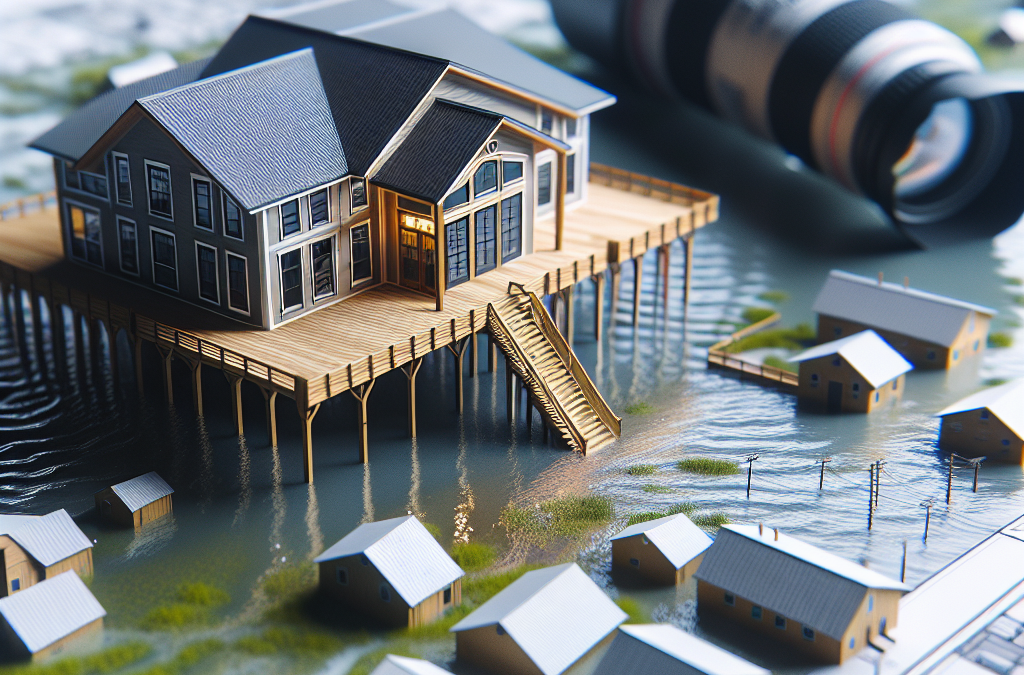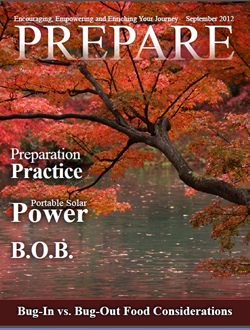As someone who’s been living the homestead life for a while, I’ve encountered my fair share of extreme weather. From hurricans to heatwaves, having a solid plan has made the difference between chaos and calm. So, I’m excited to share my tips on how to create a homestead plan that’ll keep you and your family safe, no matter what Mother Nature throws your way!
1. Assess Your Risks and Resources
Understanding Local Weather Patterns
The first step in creating your homestead plan is to get to know your local weather patterns. Every region has its quirks, and understanding these can help you anticipate trouble. Is your area prone to hurricanes? Do you get heavy snowfall? Take a minute to research past weather events to get the full picture.
Look into historical data from weather stations or local news. Charting out typical weather for each season can help you prepare for the best—and the worst. This will also help you identify which emergencies are most likely, giving you a focus for your planning.
Don’t forget to talk to neighbors and local experts. They’ve lived through their share of storms and can offer insight that you won’t find online. It’s all about building a community of knowledge and strength.
Evaluating Your Homestead Layout
The next step is to take a good, hard look at your homestead. Walk around and assess areas that might become vulnerable during extreme weather. Is your garden prone to flooding? Do you have anywhere that could become a wind tunnel?
Make a list of the strengths and weaknesses of your property. Identify which areas are safe zones and which ones might need some extra TLC or protection. This evaluation can help you make necessary adjustments to protect your home and livelihood.
Consider access points too. If a major storm hits, you’ll need reliable ways in and out. Creating alternative routes to livestock, water supplies, or shelter is crucial in keeping everything running smoothly.
Inventory of Supplies and Tools
Next up, it’s time to inventory what you have. Grab a notebook and make a list of supplies, tools, and resources you already have on hand. You might be surprised at how prepared you actually are! This includes food supplies, medical kits, and any tools you’ll need to clear debris or fix damage post-storm.
Think about what additional resources you might need. Do you have enough non-perishable food for a week? What about water? My family has a minimum requirement of gallons stored away, just in case. It’s better to over-prepare than to find yourself wishing you had that extra bag of rice.
Lastly, keep your inventory updated. Regular check-ins on your supplies can help you identify gaps early, ensuring you’re never left scrambling at the last minute.
2. Create an Emergency Action Plan
Establish Communication Protocols
Once you’ve assessed the situation, it’s time to create your emergency action plan. Start with communication protocols. Who do you contact first in an emergency? How do you relay real-time updates? Establishing a reliable line of communication with family, friends, and local resources can make a world of difference.
Consider technology too. Apps and messaging services can be useful for staying connected, provided you have power and service. But it’s also smart to keep old-school methods on hand—a good ol’ whistle or some flares can be lifesavers when all else fails.
Don’t forget about your pets, either! Make sure your entire crew knows who’s responsible for keeping them safe. Having a clear game plan can save valuable time and drop the stress during a crisis.
Evacuation Routes and Shelter Plans
Your action plan should include specific details on evacuation routes and shelters. Sit down as a family and map out potential routes to safety. Consider multiple options—don’t just rely on one way out. Weather conditions can change quickly, and it’s essential to have back-up plans.
Plan where you would go and ensure that it’s a place you can reach easily. It can be a friend’s house, a community center, or even a local school. Make sure all family members are familiar with these plans, so everyone is ready to act swiftly.
And don’t forget to pack an emergency kit! Think of everything you may need—documents, medications, food, water, and anything vital to your daily lives. Create a checklist of items to ensure you’re fully prepared if you ever need to evacuate.
Practice Makes Perfect
Creating a plan is one thing, but practicing it is what truly makes it effective. Schedule regular drills with your family to practice various scenarios. Whether it’s a fire drill or a tornado warning, going through the motions will reduce panic during the real deal.
Make adjustments based on what works or needs improvement. Discuss these drills with your family members afterward to gather feedback and identify opportunities for enhancing your plan.
I can’t stress enough how important this step is. Just like any skill, the more you practice, the more comfortable and confident you’ll be when the real thing hits.
3. Strengthening Infrastructure and Shelter
Upgrading Your Home’s Resilience
Your home is your fortress, so it’s essential to make it as resilient as possible. Begin by assessing your roof, windows, and doors. Do they need fortifying? Consider storm-proofing them using shutters or heavy-duty drapes to minimize damage from wind or flying debris.
Next, look into your insulation and heating/cooling systems. Proper insulation can prevent damage from frozen pipes, while a reliable cooling system will keep you comfortable in extreme heat. Regular maintenance of these systems can make a big difference during challenging weather.
As a bonus, installing a backup generator can provide invaluable peace of mind. Losing power during a storm can be worrisome if you depend on electricity for heating or water supply. A generator ensures that you can maintain your homestead’s vital functions when the grid goes down.
Utilizing Natural Landscapes for Protection
Another part of strengthening your infrastructure involves your landscape. The natural features of your land can provide significant protection during severe weather. For instance, planting trees or shrubs can act as windbreaks. They may also help filter excessive rain and erosion in vulnerable areas.
Strategic landscaping can divert water flows away from your home as well. Think about grading your yard away from your foundation or creating rain gardens to absorb excess runoff. When done correctly, these measures can significantly reduce flooding risks and promote better water management.
Plus, it enhances your aesthetic! I love combining functional landscaping with beautiful gardening. It’s a win-win in my book.
Building Emergency Structures
Depending on your situation, it might be worth considering building emergency structures such as a storm shelter or a safe room. Research local building codes and expert recommendations to ensure these spaces will adequately protect you during severe weather.
Even a cellar or basement can be an effective emergency refuge. Ensure it is stocked with supplies and appropriately cleared out so that your entire family can access it safely in times of need. Having a dedicated space for emergencies can offer great peace of mind.
And don’t forget to make this space comfortable! It could become a cozy gathering place during a storm, so add some blankets, games, and books for entertainment. An emergency should not feel like a prison!
4. Food and Water Security
Long-Term Food Storage Solutions
A critical aspect of any homestead plan is ensuring you have sufficient food supplies for whatever might come your way. Start by establishing a long-term food storage system. Canning, dehydrating, and freezing fresh produce can help ensure you have plenty of nutrients even if help is delayed.
I like to dedicate a portion of my garden just for preserving crops later. It’s a fun project! Plus, knowing your efforts will pay off during tough times is incredibly rewarding.
Don’t forget to rotate your supplies! It’s easy to forget what you have in storage, so label everything and keep track of expiration dates. Regularly resorting your pantry can help avoid waste and keep things fresh.
Reliable Water Sources
Water is life, and during extreme weather, it can become scarce quickly. Ensure you have a reliable supply of clean water stored. A common recommendation is to have at least one gallon of water per person per day for at least three days, but I like to keep more if space allows.
Consider rainwater harvesting systems if local regulations allow it. Investing in barrels to capture rainwater can greatly increase your water source. It’s eco-friendly and combative to dry spells!
Maintain your storage tanks and check for any leaks regularly. This way, you’ll be sure that your water supply remains stable and accessible when you really need it.
Gardening for Resilience
Finally, think about how to supplement your food sources with gardens. Growing your own vegetables, herbs, and fruits is a fantastic way to increase resilience. Focus on hardy crops that can withstand extreme conditions—things like root veggies or greens.
Plan your garden layout with future weather events in mind. Using raised beds can prevent flooding and allow for better drainage. You could also consider creating small greenhouses or row covers that will protect delicate plants from intense heat or chilly winds.
The joy of growing your own food can be a huge morale booster during difficult times. Plus, it connects you directly to your homestead and all that hard work will pay off in the long run!
5. Community Connection and Support
Building Relationships with Neighbors
In times of crisis, your neighbors can be your biggest assets. Building relationships within your community will ensure that everyone is looking out for one another. Collaborative planning can increase overall resilience, so organize community meetings or disaster preparedness workshops.
Pooling resources can also be a lifesaver. Maybe one neighbor has a generator they can share, while another has extensive knowledge about gardening or first aid. By sharing skills and resources, we can all feel more empowered and supported.
Participating in local events and volunteering can help solidify these bonds. When you know your community is tight-knit, it eases the anxiety of uncertain times knowing you have a solid support system.
Accessing Local Emergency Resources
Don’t forget to familiarize yourself with local emergency services and resources. Knowing where to turn when an emergency arises is vital. Research local shelters, services for vulnerable populations, and how to access emergency medical care.
Make a list of local contacts, from fire departments to community centers. Keep these handy and share them with your family. The more prepared you are to seek out help, the smoother things will go during a crisis.
Many communities also have volunteer groups focused on disaster response, so consider joining. Not only does it allow you to contribute but it further enhances your understanding of local emergency strategies.
Participating in Groups and Workshops
Finally, participating in local groups or workshops can expand your knowledge and build connections. Whether it’s gardening clubs, emergency preparedness courses, or even neighborly gatherings, these events can offer insights you might not have considered.
I’ve learned so much just by attending community workshops, from canning to first-aid training. These skills can be invaluable during emergencies and help create a sense of unity among community members.
Plus, getting involved is fun! There’s something about being with like-minded individuals who share common interests in prepping and sustainability that feels good. So get out there and make those connections!
Frequently Asked Questions
1. What is the first step in creating an effective homestead emergency plan?
The first step is to assess your risks and the resources you have available. Understand local weather patterns and evaluate your homestead layout to identify vulnerabilities.
2. How often should I update my emergency supplies?
It’s important to regularly check your emergency supplies at least every six months. This ensures that you’ll be prepared with fresh items and not caught off-guard in an emergency.
3. Should I involve neighbors in my emergency planning?
Absolutely! Involving neighbors can enhance your resilience. Building relationships fosters community support, which is invaluable during emergencies.
4. What are some essential items to include in my emergency kit?
Your emergency kit should include food, water, first-aid supplies, flashlights, batteries, important documents, and any medications you may need. Don’t forget a map of your area and escape routes!
5. How do I know what crops to grow for my homestead?
Select crops that are well-suited to your local climate and can withstand extreme conditions. Research locally adapted varieties, and consider starting with hardy crops like root vegetables and greens.
There you have it! By following these steps, you’ll be well on your way to creating a homestead plan that can weather whatever comes your way. Stay prepared and take care!





